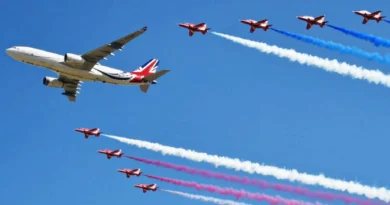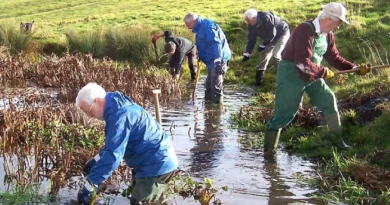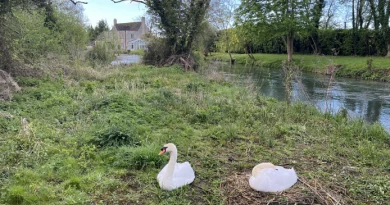46. Cricket in the Cotswolds
Village cricket is the epitome of English country life – and nowhere more so than in the Cotswolds. Apart from boasting dozens of beautiful village cricket grounds, the Cotswolds also has some interesting cricketing claims to fame, both vintage and modern.
Peter Pan author J M Barrie was a huge cricket lover but whose writing ability far outweighed his cricketing talent. He has some fascinating cricketing connections with the Cotswolds. Between 1890 and 1913, Barrie was the driving force behind the Allahakbarries, an amateur cricket team made up of players from the literary community. Barrie’s team included many of the foremost literary figures of the time, such as H G Wells, Rudyard Kipling, Arthur Conan Doyle, P G Wodehouse, Jerome K Jerome and A A Milne.
Can you imagine the banter between such literary luminaries on and off the field? And how on earth would they decide who would write the match report? Between 1923 and 1932, Barrie rented Stanway House, near Broadway, each summer from the Earl of Wemyss, whose daughter, Lady Cynthia Asquith, was a good friend of the author. Barrie paid for the construction of Stanway’s wonderful thatched cricket pavilion, which was built on 25 staddle stones and is still used today.
During his stays in the Cotswolds, Barrie organised matches between his team and others in the area. Barrie’s most calamitous personal performance occurred in the Cotswolds many years earlier, when he was clean bowled by the American actress Mary Anderson, who had challenged Barrie and his team to a cricket match on Broadway’s village green in 1897.
Barrie died in 1937 but in 2011 a book entitled Peter Pan’s First XI was published. Written by Kevin Telfer, the book weaves together cricket, literature, history, humour and biography to create an entertaining account of Barrie’s little-known band of cricketing Peter Pans and the age in which they lived.
Although most cricket grounds in the Cotswolds are used primarily for local league matches on Saturdays and friendlies on Sundays in the summer, it was a while ago that Moreton-in-Marsh Cricket Club would host occasional fixtures for Gloucestershire County Cricket Club.
Gloucestershire first played at Moreton in 1884, and several first-class county matches were subsequently played there until 1914.
Gloucestershire returned to Moreton in 1972, and between then and 1996, 21 one-day matches were played there, including regular Sunday League afternoon games.
One of the best cricketers to come out of the Cotswolds was Tetbury-born Cecil “Sam” Cook (1921-1996), who played for his native Gloucestershire from 1946-1974 and remarkably took almost as many first-class wickets in his career as he scored runs. A left-arm spinner, Cook took a wicket with his first ball in first-class cricket and went on to take 1,782 first-class wickets. However, he was no batsman at all, scoring just 1,965 runs in his career and never reaching 40 in an innings. Cook played one Test match for England against the South Africans in 1947, and after retiring from playing, he stood as a first-class umpire until 1986.
More recently, the Cotswolds has produced one of England’s most colourful and eccentric cricketers of all time, the wicketkeeper Jack Russell, who was brought up in Stroud. Russell, born in 1963, played for Gloucestershire for over 20 years. As one of the finest wicketkeepers of his era, he made his England debut in 1988 and went on to play for his country in 54 Test matches and 40 One-Day Internationals.
Having developed his talents as an artist while still playing, Russell has enjoyed a successful second career and has his gallery in Chipping Sodbury.
At a rather more grassroots level, one team of Cotswold cricketers has achieved something some professional cricketers never accomplish—playing at Lord’s, the home of cricket.
The village team in Shipton-under-Wychwood, near Burford, is regarded as one of the strongest teams in Oxfordshire and has achieved regular success in the Home Counties Premier League. But in 1997, players achieved every village cricketer’s dream by making it to the final of the National Village Knockout, played at Lord’s. Despite ending as runners-up, they fought to the final in 2002 and 2003 and were triumphant on both occasions. The club made it to the final again in 2010 but didn’t manage a third cup win.
In 2010, another Cotswold village cricket team achieved a claim to fame that few could match when they secured a sponsorship deal with rock royalty.
Slaughters United, which combines the cricketing talents of the neighbouring villages of Lower Slaughter and Upper Slaughter, gained Coldplay’s backing to sponsor its new shirts. Coldplay’s frontman Chris Martin, who is said to be a useful batsman, has played club cricket in Devon and has also played in the past for Great Rissington, another village team in the Cotswolds, not many miles from the Slaughters.




